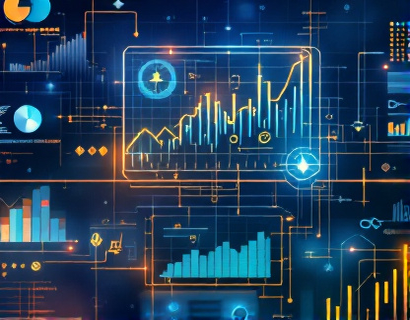Top Blockchain Tokens: A Premier Resource for Informed Investment Across Diverse Crypto Ecosystems
The landscape of cryptocurrency is rapidly evolving, with new tokens and blockchains emerging regularly. For investors and enthusiasts, staying informed about the top blockchain tokens is crucial for making savvy investment decisions. This comprehensive guide aims to provide detailed listings and analysis of the most prominent tokens across various ecosystems, offering essential market insights and innovation updates. By understanding the unique features and potential of these tokens, investors can navigate the dynamic cryptocurrency landscape with confidence.
Understanding Blockchain Tokens
Blockchain tokens are digital assets that run on specific blockchain networks. They serve various purposes, from facilitating transactions and storing value to enabling decentralized applications and governance. Tokens can be categorized into several types based on their functionality and use cases. Understanding these categories is the first step in identifying top tokens for investment.
Utility Tokens: These tokens provide access to a product or service within a specific ecosystem. They are often used to pay for transactions, access features, or vote on protocol upgrades. Examples include Binance Coin (BNB) for services on the Binance platform and Augur (AUG) for decentralized prediction markets.
Security Tokens: These tokens represent a claim on a real-world asset or a share in a company. They are subject to regulatory oversight and can offer traditional investment opportunities in the crypto space. Examples include TokenBox (TBN) for art and collectibles and Chainlink (LINK) which, while primarily a decentralized oracle network, also offers security tokens.
Stablecoins: Designed to maintain a stable value, typically pegged to fiat currencies like the US Dollar, stablecoins reduce volatility and facilitate everyday transactions. Examples include Tether (USDT) and USD Coin (USDC).
Crypto Assets: These are tokens that have intrinsic value within their own ecosystem, often used as the native currency. Ethereum (ETH) is a prime example, serving as both a crypto asset and a platform for decentralized applications.
Top Blockchain Ecosystems and Their Tokens
The cryptocurrency landscape is divided into several prominent blockchain ecosystems, each with its own set of top tokens. Understanding the strengths and unique features of these ecosystems can guide investment decisions.
Ethereum Ecosystem
Ethereum remains the most established and widely used blockchain platform, known for its smart contract capabilities. The top tokens in this ecosystem include:
- Ethereum (ETH): The native cryptocurrency of the Ethereum network, used for gas payments and as a store of value.
- Uniswap Voting Token (UNI): Governance token for the Uniswap decentralized exchange, allowing holders to propose and vote on protocol changes.
- SushiSwap Voting Token (SUSHI): Governance token for the SushiSwap decentralized exchange, offering similar governance rights as UNI.
- Yearn Finance (YFI): Token for the decentralized finance (DeFi) platform that allows users to earn passive income by delegating their crypto assets.
Binance Smart Chain Ecosystem
Binance Smart Chain (BSC) has gained significant traction due to its low transaction fees and fast block times. Key tokens in this ecosystem include:
- Binance Coin (BNB): The native token of Binance, used for paying transaction fees, buying assets, and participating in governance.
- PancakeSwap V2 Token (PAY): Governance token for the PancakeSwap decentralized exchange, enabling community-driven decisions.
- Binance DeFi Token (BDFI): Token used within the Binance DeFi ecosystem for various services and incentives.
- Binance Pay Token (BNPAY): Token for the Binance Pay service, facilitating seamless payments and rewards.
Polkadot Ecosystem
Polkadot (DOT) is a multi-chain platform designed to connect various blockchains, enabling interoperability. Top tokens in this ecosystem include:
- Polkadot (DOT): The native governance token, used for validator elections and protocol upgrades.
- Kusama Token (KSM): Utility token for the Kusama testnet, used for staking and governance.
- Solana (SOL): While primarily its own ecosystem, SOL is often used in Polkadot interoperability projects.
- Gravity Protocol Token (GRV): Token for the Gravity Network, facilitating decentralized data storage and sharing.
Cardano Ecosystem
Cardano (ADA) is a proof-of-stake blockchain platform known for its scientific approach and layered architecture. Key tokens include:
- Cardano (ADA): The native token, used for transactions, staking, and governance.
- IOHK Token (IOHK): Token representing the IOHK development team, used for governance and incentives.
- Emurgo Token (EMRG): Token for the Emurgo investment fund, supporting projects on the Cardano ecosystem.
- Guardian Token (GRN): Token for the Guardian network, ensuring the integrity and security of the Cardano blockchain.
Solana Ecosystem
Solana (SOL) is known for its high throughput and low fees, making it ideal for decentralized applications. Top tokens in this ecosystem include:
- Solana (SOL): The native token, used for transactions, staking, and governance.
- Wormhole Token (WORM): Token for the Wormhole interoperability protocol, facilitating cross-chain transactions.
- Rocket Fuel (RFT): Token used for staking and validating on the Solana network.
- Samba Token (SAMBA): Token for the Samba protocol, enabling decentralized data storage and computing.
Other Notable Ecosystems
Beyond the major ecosystems, several other blockchains are worth noting for their unique features and promising tokens.
Tezos Ecosystem
Tezos (XTZ) is a self-amending blockchain that focuses on scalability and sustainability. Key tokens include:
- Tezos (XTZ): The native governance token, used for upgrading the protocol and voting on changes.
- Adalyn Token (ADL): Utility token for the Adalyn layer 2 solution, enhancing scalability on the Tezos network.
- Mina Protocol Token (MNA): Token for the Mina network, aiming to achieve scalability without sacrificing security.
EOS Ecosystem
EOS is a scalable blockchain platform designed for decentralized applications. Top tokens include:
- EOS (EOS): The native token, used for voting, staking, and transaction fees.
- Bitshares (BSV): Token for the Bitshares platform, focusing on decentralized exchanges and financial services.
- Holochain Token (HOX): Token for the Holochain decentralized network, enabling peer-to-peer data sharing.
Factors to Consider When Investing in Blockchain Tokens
Investing in blockchain tokens requires a thorough understanding of the underlying technology, market trends, and project fundamentals. Here are some key factors to consider:
Project Team and Development: Evaluate the experience and track record of the project team. A strong, transparent, and active team is crucial for the success of a blockchain project.
Network Security: Assess the security measures in place, including consensus mechanisms, smart contract audits, and community governance.
Use Cases and Adoption: Consider the practical applications and real-world adoption of the token. Tokens with clear use cases and growing adoption are more likely to succeed.
Market Position and Competition: Analyze the token's position within its ecosystem and the level of competition. Tokens that offer unique value propositions or significant advantages over competitors are more likely to thrive.
Regulatory Environment: Stay informed about regulatory developments that could impact the token and its ecosystem. Compliance and regulatory support can enhance credibility and adoption.
Community Support and Engagement: A strong, active community can drive adoption and innovation. Look for tokens with engaged communities and regular updates.
Conclusion
Investing in blockchain tokens requires a combination of technical knowledge, market analysis, and strategic thinking. By understanding the different types of tokens and the unique features of major blockchain ecosystems, investors can make informed decisions. Stay updated on market trends, project developments, and regulatory changes to navigate the dynamic cryptocurrency landscape successfully.










































